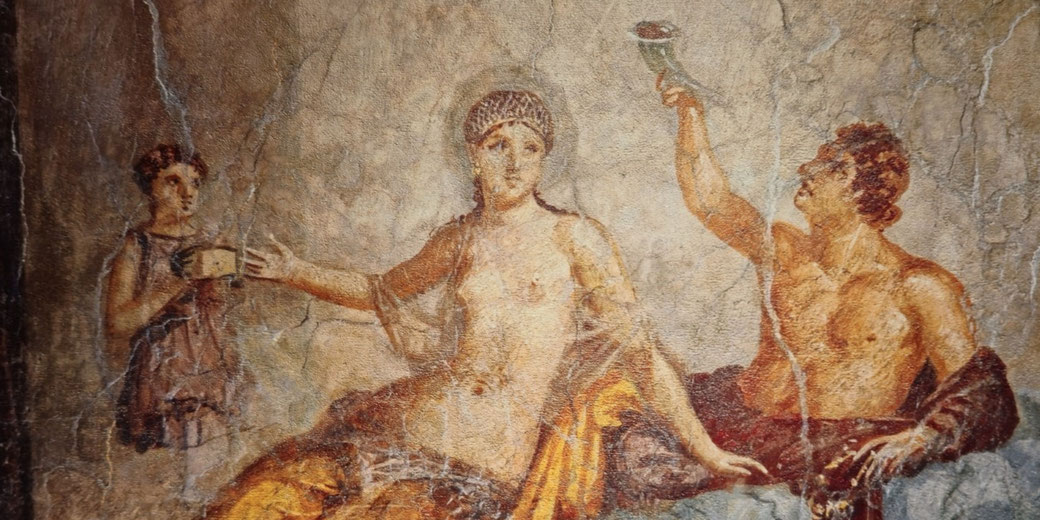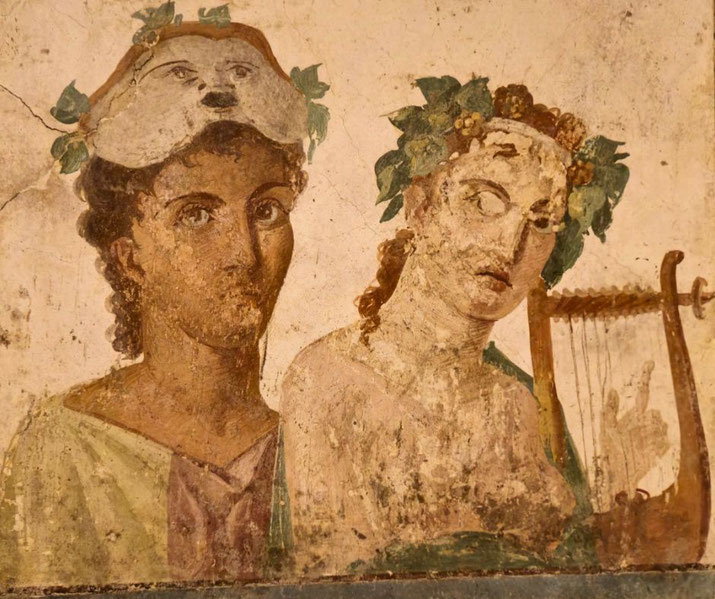What were families like in Ancient Rome?

Roman society largely depended on families to maintain order and tradition to secure power. Every citizen generally owed their name, status, and legal identity to their family, which carried expectations of loyalty and civic duty.
From the early Republic, traditionally dated to the late sixth century BCE, to the late Empire in the fifth century CE, from patrician dynasties like the Julii to humble artisan households, each family supported Rome’s political and religious order which influenced the behaviour of its members through law and custom and daily rituals.
As moral guides, Roman families upheld the values of pietas and gravitas, expressed through fides as practical duties rather than vague ideals.
How Roman families were structured
At the heart of the Roman household stood the paterfamilias, who generally exercised absolute authority through patria potestas, a legal power that gave him control over his children, wife, slaves, and even adult sons.
Roman law recognised him as the head of the household and allowed him to manage all property, arrange marriages, choose heirs, and determine the lives of those under his roof.
His word, which usually carried legal force, demanded obedience, and in theory it extended to severe penalties such as sale into slavery or even execution.
However, by the Imperial period, this occurred rarely, attracted social censure, and were discouraged by legal experts and emperors who regarded such acts as excessive and old-fashioned.
Importantly, the Roman idea of familia did not refer to a nuclear family. It included clients, freedmen, slaves, adopted relatives, and distant kin who lived under the same legal and economic unit.
Among the elite, adult male adoption often replaced biological succession when families lacked a male heir, and this practice allowed ambitious men to secure political continuity.
For example, Julius Caesar had adopted Octavian to ensure the survival of his name and reputation, and the later Nerva–Antonine house made adoption a rule of imperial succession from Nerva to Marcus Aurelius.
Wealthy households could include dozens or even hundreds of enslaved people within the familia, which expanded a household’s labour, prestige, and political reach through an larger household staff.
Within the household, women held limited legal rights, though their influence remained practical and real.
In cum manu marriages, a woman passed into the legal control of her husband and joined his household fully.
However, in sine manu marriages, which became increasingly common from the late Republic onwards, a woman remained under the authority of her father and typically kept control of her dowry, a legal arrangement that had given elite families more flexibility in managing their assets and heirs, and allowed widowed women outside manus could inherit and manage property or run businesses in their own name.
Freedmen often continued as clients of their former masters, which strengthened household networks and increased a family’s reliable supporters.
Children generally received their father’s name and lived under his authority into adulthood, because unless he had granted independence through emancipatio, even grown sons could not legally own property.
Daughters typically married young and entered another household, but before marriage, their education and conduct reflected the values and discipline imposed by the paterfamilias.
Family honour relied on obedience and moral behaviour, upheld by strict adherence to social roles, and families expected marriage ages that reflected those aims, with men often marrying in their late twenties or early thirties and girls commonly entering marriage around twelve to fourteen.

How to marry into a Roman family
Marriage in Rome mainly focused on securing status and property to build political alliances rather than affection, as fathers negotiated matches early, and they often betrothed daughters before puberty, when alliances with another household offered strategic advantages.
Marriages involved clear legal and social consequences, and each decision shaped the future of multiple generations.
A legally recognised marriage, matrimonium iustum, depended on the legal right of both families and the presence of Roman citizenship, while written agreements often specified the dos or dowry to protect assets and expectations.
Strictly speaking, Roman law did not require religious rituals or official documents to validate a marriage.
Instead, the ceremony centred on tradition and symbols. Engagements, or sponsalia, came first.
Then the wedding itself involved joining of hands, an offering of spelt cake (farreum), and a formal procession to the husband’s house.
Brides wore a saffron veil called the flammeum and styled their hair in the traditional seni crines braid pattern, both symbols of Roman virtue and obedience, and the deductio in domum mariti unfolded with torches, music, and the symbolic crossing of the threshold.
Divorce, by contrast, could occur relatively easily, because either spouse could end the marriage by declaring it over and returning the dowry.
Among the upper classes, divorce reflected political strategy more than personal dissatisfaction.
During Augustus’ reign, laws were designed to encourage marriage and penalise celibacy or childlessness, as the Lex Julia (18 BCE) and Lex Papia Poppaea (9 CE) rewarded fertile couples with inheritance privileges and punished those who remained unmarried or had too few children, and widows who failed to remarry within the specified period risked losing certain benefits.
As a clear example of political calculation, Augustus compelled Tiberius to divorce his wife and marry Julia the Elder to reinforce dynastic plans.
What was daily life like for Roman families?
Each morning, elite families typically hosted the salutatio, a formal greeting ceremony where clients assembled to pay respects to the paterfamilias, as he received them in the atrium, listened to their petitions, and often distributed favours, which might include legal advice, food, or financial support.
In return, clients pledged loyalty and public support. This daily exchange reinforced status and dependence which created a web of social obligation that extended across the city, and at dawn, clients might also receive a sportula, a small basket or coin payment that indicated the patron’s generosity.
Children’s education also followed strict routines, as wealthy boys studied reading, writing, Greek, Latin, and rhetoric with tutors, while their sisters received training in domestic skills and moral instruction.
Discipline came from the father, who expected hard work and strict obedience.
Roman education aimed to produce future leaders, and fathers guided their sons toward careers in law, politics, or the military.
Boys began formal schooling around age seven under a litterator, advanced to a grammaticus for literature and language, and then to a rhetor for public speaking.
Celebrated teachers such as Quintilian trained the sons of the elite in public speaking.
For poor families, education remained informal and practical, passed down through family trades and religious instruction.
Families remembered their dead each year during the Parentalia, when offerings were placed on graves and ancestral spirits were honoured.
Wealthy households displayed wax masks called imagines to preserve the memory of deceased relatives.
During funerals or triumphs, family members wore these masks to remind onlookers of their heritage and to display their connection to Rome’s glorious past.
The Parentalia ran from 13 to 21 February and concluded with the Feralia, which closed the cycle of offerings and restored ordinary routines.
The most family Roman families in history
Several Roman families held power for generations by controlling military commands and political offices that secured marriage alliances.
The most famous among them were the Julii, who claimed descent from the goddess Venus and traced their ancestry to the Trojan hero Aeneas.
Gaius Julius Caesar, born in 100 BC, led the family to a new level of prominence.
His victories in Gaul, political rise as dictator, and assassination in 44 BC reshaped Roman politics.
His adopted son was Gaius Octavius, later called Augustus, and he became Rome’s first emperor, and Caesar commemorated this divine connection by dedicating a temple to Venus Genetrix in the Forum.
Another major house was the Claudii, which produced emperors like Tiberius, Claudius, and Nero.
They often secured power through calculated marriages and political manoeuvres.
By aligning with the Julii, they helped to create the Julio-Claudian dynasty, which controlled the early Empire.
Their history involved scandal, violence, and controversy, but their influence never weakened during their years in power, and their entry into Roman politics traced back to an early Republican migration from Sabine territory that brought the Claudii into the patriciate.
The Cornelii Scipiones gained fame through their military achievements. Scipio Africanus defeated Hannibal at Zama in 202 BC, while Scipio Aemilianus led the final destruction of Carthage in 146 BC.
Their family name symbolised victory and Roman advantage in warfare. By preserving military honour and public duty, the Scipiones held key positions in the Senate and influenced Roman foreign policy.
The Gracchi family were remembered for their tragic end and tried to reform Rome from within.
Tiberius and Gaius Gracchus, sons of Cornelia Africana, challenged elite landholding patterns and pushed for redistribution to Rome’s poor.
Both brothers died violently, but their name remained associated with reform and resistance to aristocratic control, and their tribuneships in 133 BCE for Tiberius and 123–122 BCE for Gaius framed a decade of unrest.
How families were powerful political drivers
Roman politics relied on families to control elections, appointments, and legislation.
Without political parties, elite households maintained power by promoting sons to office, supporting clients, and marrying daughters into rival dynasties.
Every consulship, praetorship, or command reflected the success of a family strategy rather than individual talent alone, and in the late Republic approximately 300 to 600 families made up the senatorial class that competed for status and advantage.
Marriage arrangements reinforced political alliances. For example, Pompey the Great married Julia, daughter of Julius Caesar, to strengthen the First Triumvirate.
Later, Octavian offered his sister Octavia to Mark Antony to preserve peace between their factions.
These unions ensured temporary loyalty, although they rarely lasted once political goals changed, and legal controls on electioneering known as ambitio attempted to restrain bribery while rarely achieving more than a temporary check.
Client networks also preserved family influence. The paterfamilias acted as a patron, offering protection and assistance to a network of supporters.
Clients generally repaid this with political loyalty, public praise, and votes during elections.
Patronage extended through generations and became a defining feature of Roman social order.
Some families, which might have had hundreds of clients, used this support to secure office, pass legislation, or influence legal decisions, and Romans described this web as clientela to emphasise its long-lasting and passed down across generations.
Adoption often gave families a legal tool that helped them maintain control over inheritance and succession.
When biological heirs failed or political needs changed, elite Romans adopted capable adults who could continue their reputation.
Ultimately, Roman families operated as dynastic systems, as they directed the Republic’s electoral system, controlled military commands, and influenced imperial succession.
Their influence rested on centuries of loyalty and strategy, backed by relentless determination passed from one generation to the next, and family tombs along roads such as the Appian Way displayed inscriptions that listed repeated offices across generations to keep that reputation visible to all who passed.
What do you need help with?
Download ready-to-use digital learning resources
Copyright © History Skills 2014-2025.
Contact via email
With the exception of links to external sites, some historical sources and extracts from specific publications, all content on this website is copyrighted by History Skills. This content may not be copied, republished or redistributed without written permission from the website creator. Please use the Contact page to obtain relevant permission.





